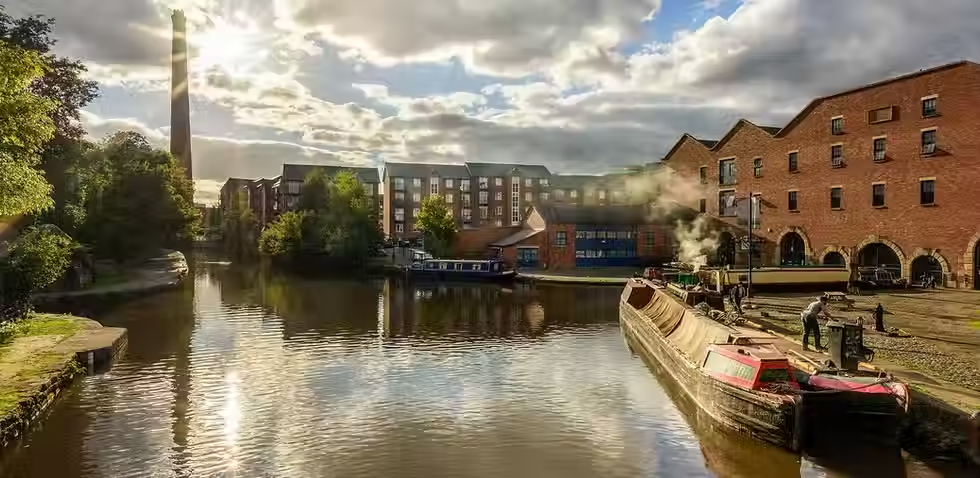The Hunt is On: Tameside Seeks Master Developer for Ashton's Multi-Billion Transformation
- Rico Naylor

- Aug 21
- 3 min read
A rare, large-scale regeneration opportunity just went live, targeting an "undervalued" Greater Manchester town centre with plans for 2,400 homes, expansive commercial space, and a pioneering transport hub.

Tameside Council has officially fired the starting gun on its search for a long-term development partner to spearhead the comprehensive regeneration of Ashton-under-Lyne.
In a signal of major intent, the council is moving to consolidate years of strategic planning into a single, actionable framework, preparing to go to market to find a partner by Spring 2026.
This isn't just another town centre refresh. This is a foundational play to reshape a key Greater Manchester hub.
The chosen developer will enter into a Master Development Agreement, creating a powerful public-private partnership to deliver on a massive scale.
The Scale of the Prize 🏆
The ambition for the Ashton Mayoral Development Zone (AMDZ) is backed by significant numbers, designed to attract top-tier development talent:
Housing: Up to 2,400 new homes, creating a new, sustainable residential community at the heart of the town.
Commercial: 12.5 hectares of commercial space aimed at supercharging business growth and job creation in sectors like manufacturing, health, and education.
Connectivity: The delivery of Greater Manchester’s first Bee Network Station, a major piece of infrastructure integrating Metrolink, bus, and rail services to anchor a new wave of transit-oriented development.
The Investment Thesis: "Undervalued & Connected"
For investors and developers, the core pitch for Ashton is simple: it’s a strategically positioned asset that remains undervalued compared to its neighbours.
Located just seven miles from Manchester city centre, it has direct access to transport networks and a strong digital infrastructure, making it a compelling and potentially more accessible alternative to other regional growth areas.
The vision is to build on this foundation by transforming the public realm, unlocking underused assets for enterprise and culture, and reimagining the high street with a resilient mix of independent retail, hospitality, and flexible workspaces.
From the Leaders
Councillor Andrew McLaren, Deputy Leader of Tameside Council, stated the goal is to find a partner with a proven track record in the region.
"By linking together key sites and opportunities... we’re creating a stronger foundation for growth. We are looking to work with developers who know the difficulties that they faced to bring schemes forward."
Adam White, Executive Director at CBRE, who is advising the council, added:
"This is a pivotal moment... We're confident that with the right developer partner, we can unlock significant opportunities for investment and create lasting value for the residents of Tameside."
The council is also exploring whether to expand the partner's scope to include opportunities in Droylsden Town Centre, a move that would further increase the scale and impact of the partnership.
The Insider Take: Three Questions Every Bidder Should Be Asking
This announcement is more than just a procurement notice; it's a test of the market's appetite for true, long-term placemaking.
While the numbers are impressive, the real opportunity and the most significant challenges lie beneath the surface.
As we see it, any firm serious about this partnership needs to have a compelling answer to three fundamental questions.
1. The Placemaking Challenge: How Do You Sell a New Story?
Ashton is described as "undervalued." But in CRE, "undervalued" is often code for "perception problem." The winning bidder won't just be a master builder; they'll need to be a master storyteller.
How will they create a "remarkable" identity for Ashton that competes with the established narratives of other Manchester boroughs? Building shiny sheds and apartments isn't enough. The real work is building a brand and a sense of place that people actively choose.
2. The Occupier-First Question: Who Is This For?
The framework outlines the "what" (2,400 homes, 12.5ha commercial). The critical missing detail is the "who." Who is the target resident for these new homes? Are they young professionals, families, or downsizers?
What is the specific occupier profile for the commercial space? Is it aimed at attracting logistics, life sciences, or creative industries?
A developer who leads with a clear, data-backed vision of the end-user, the occupier, will have a massive advantage. Without this customer focus, you risk building a place for everyone, which ultimately is a place for no one.
3. The Opportunity: What Can Ashton Be That Nowhere Else Is?
The opportunity here isn't to be a cheaper version of Ancoats or a smaller version of Salford Quays.
The real play is to create something genuinely different.
With a new integrated transport hub and strengths in manufacturing and health, could Ashton become GM's premier hub for advanced manufacturing talent? Could it pioneer a new model for sustainable, community-led town centre living?
The partner who can define and deliver a unique, defensible niche for Ashton in the crowded Greater Manchester market will be the one who truly unlocks long-term value.




Comments